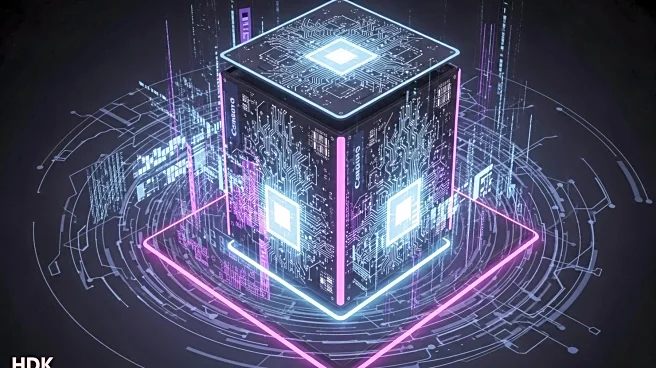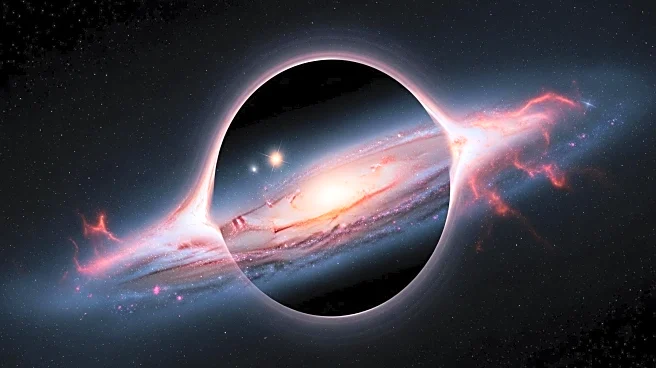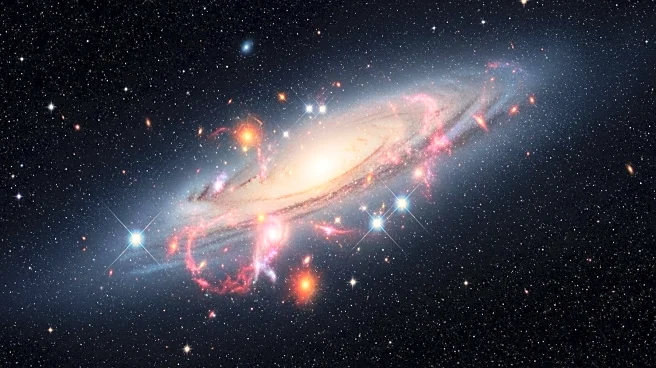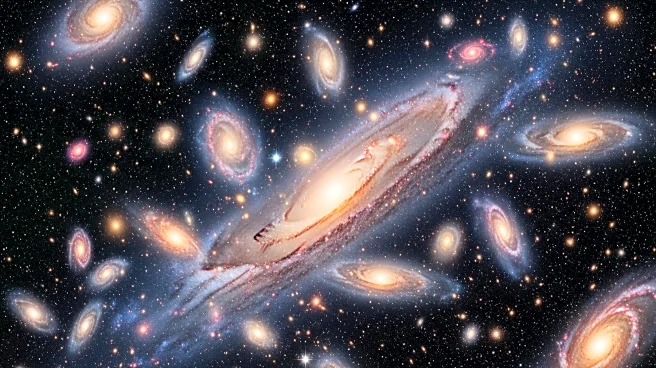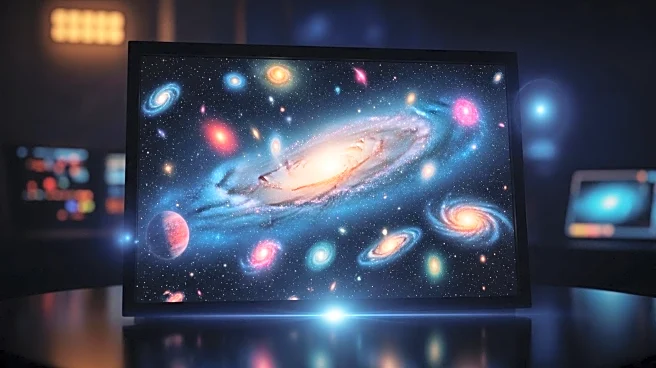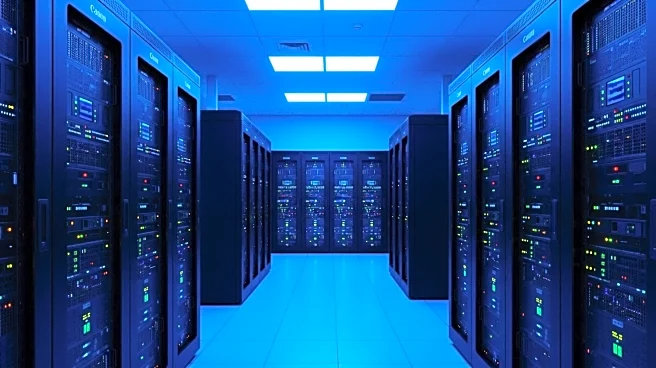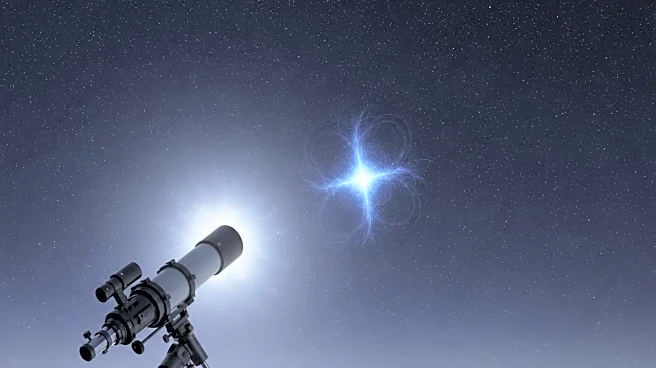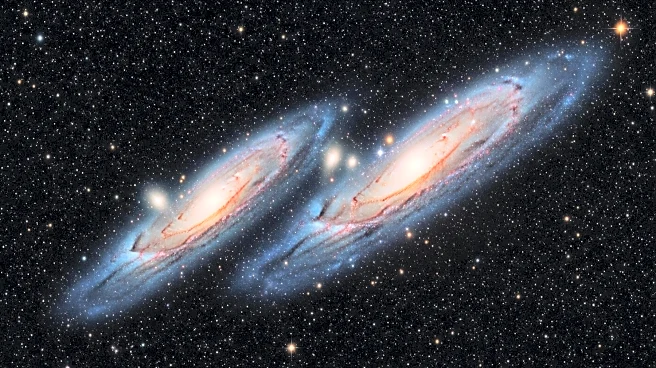What is the story about?
What's Happening?
The Euclid Consortium, part of the European Space Agency's Euclid space telescope mission, has released Flagship 2, the largest and most detailed simulation of the universe to date. This digital model includes 3.4 billion galaxies and tracks the gravitational interactions of over 4 trillion particles. Developed using an algorithm by University of Zurich astrophysicist Joachim Stadel, the simulation aims to assist scientists in analyzing data collected by the Euclid telescope. The Euclid telescope, launched in July 2023, is positioned at the Sun-Earth Lagrange Point 2 and is tasked with uncovering the mysteries of dark matter and dark energy by capturing detailed images of billions of galaxies.
Why It's Important?
The Flagship 2 simulation is crucial for preparing the analysis of Euclid's data, which seeks to understand the universe's accelerating expansion. By comparing Euclid's observations with the simulation, scientists hope to test and refine current understanding of dark matter and dark energy, which constitute 95% of the universe but remain poorly understood. The simulation is based on the standard cosmological model, yet missions like Euclid aim to push beyond this knowledge, potentially revealing flaws in the current model. The vast coverage of Euclid increases the likelihood of discovering rare cosmic phenomena, which could significantly advance scientific knowledge.
What's Next?
Euclid's first observational data, Quick Euclid data release 1 (Q1), was released on March 19, 2025. The next major data release, Data Release 1 (DR1), is scheduled for October 21, 2026. Scientists anticipate that Euclid's observations will align with the simulation's predictions, but they are also prepared for unexpected discoveries. These findings could lead to new insights into the universe's structure and the nature of dark matter and dark energy.
Beyond the Headlines
The Euclid mission and Flagship 2 simulation represent a significant step in cosmological research, potentially challenging existing theories and models. The ability to simulate and observe such a vast number of galaxies provides a unique opportunity to explore the universe's evolution and the forces driving its expansion. This research could have profound implications for our understanding of the universe and the fundamental laws of physics.
AI Generated Content
Do you find this article useful?
